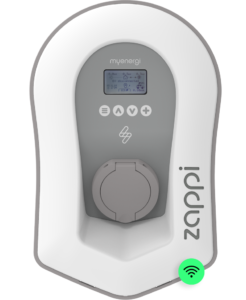How long does it take to charge an electric car with solar panels?

What is solar energy?
Solar energy, the most accessible and abundant source of energy on Earth, can be harnessed anywhere the sun reaches. It involves the use of solar panels to convert sunlight into electricity.
Contrary to a common misconception, solar panels are not solely reliant on sunny weather. They can generate power from both direct and indirect sunlight. While solar panels are most effective in direct sunlight, even on rainy days they can benefit from the cleaning effect of rain, which helps remove dirt or dust from the panels, thereby improving their efficiency. Additionally, solar panels can still produce electricity when sunlight is partially blocked or reflected by clouds.
Another misconception is that solar panels rely on the heat generated by the sun. In reality, solar panels operate more efficiently at temperatures below 77 degrees Fahrenheit (25 degrees Celsius). High temperatures can decrease their efficiency.
Solar panels work by converting three types of light into electricity at the atomic level. They are not limited to land installations alone; you can now find solar farms both on land and floating on water. These solar farms generate power for thousands of homes and are increasingly popular worldwide.

Cost savings for installing solar panels
For an average-sized home in the Ireland with a 4kW solar panel system, the cost of the PV system typically ranges from €6,000 to €8,000. This system is generally sufficient to meet the energy needs of a family of 3 or 4. When installed by an MCS certified supplier, it can result in annual savings of up to €1,000.
Additionally, taking advantage of the Smart Export Guarantee (SEG), which allows you to sell excess energy back to the grid, can contribute to further savings. With these combined benefits, the break-even point for your investment in solar panels is typically reached within 10 to 15 years.
Beyond the monetary advantages, solar energy in the Ireland is generally considered worthwhile. Regardless of the specific situation, solar panels offer numerous environmental benefits, including reducing your carbon footprint and helping to protect the environment. Embracing solar energy is a sustainable choice that aligns with efforts to combat climate change and promote a cleaner future.
How do solar panels charge my car?
Photon is indeed the term used to describe the light energy produced by the sun. It represents the most fundamental particle of all light. When it comes to solar panels, it is these photons present in natural daylight that are converted by the cells within the solar panels to generate electricity. Photons, being bundles of electromagnetic energy, are constantly in motion.
In simple terms, a solar panel operates by allowing photons, the particles of light, to collide with electrons, thereby freeing them from their atoms. This process generates a flow of electricity.
Solar panels consist of numerous smaller components known as photovoltaic cells. The term “photovoltaic” refers to the conversion of sunlight into electricity. These cells within the solar panels utilize not only the visible spectrum of colors that humans can perceive but also ultraviolet and infrared light, which are beyond the range of human vision. By harnessing this broader spectrum of light, solar panels maximize their ability to convert solar energy into usable electricity.
How long does it take to charge an electric car with solar panels?
To calculate the charging time of an electric car using solar panels, several factors come into play, including the electric car’s battery size and the voltage of the solar panels. For the purpose of this example, let’s consider the average car battery size, which is approximately 54 kWh, and the average domestic solar installation, which is around 4 kW. A solar panel of this size typically generates 3,400 kWh per year, equivalent to 9 kWh per day.
Based on this calculation, it would take approximately six 4 kW solar panels to fully charge an electric car battery in a day. However, it’s important to note that the average driver travels about 37 miles per day, which translates to roughly 12 kWh of electricity. Considering this, it’s unlikely that you would need to charge your electric car for the entire day or until the battery reaches its maximum capacity.
Most solar panel systems consist of around 25 to 30 solar panels, which means the actual charging time required in a day would be significantly less than a full day. The excess energy generated by the solar panels can be used for other purposes or can be stored in batteries for later use, further optimizing the charging process.

 libbi
libbi


